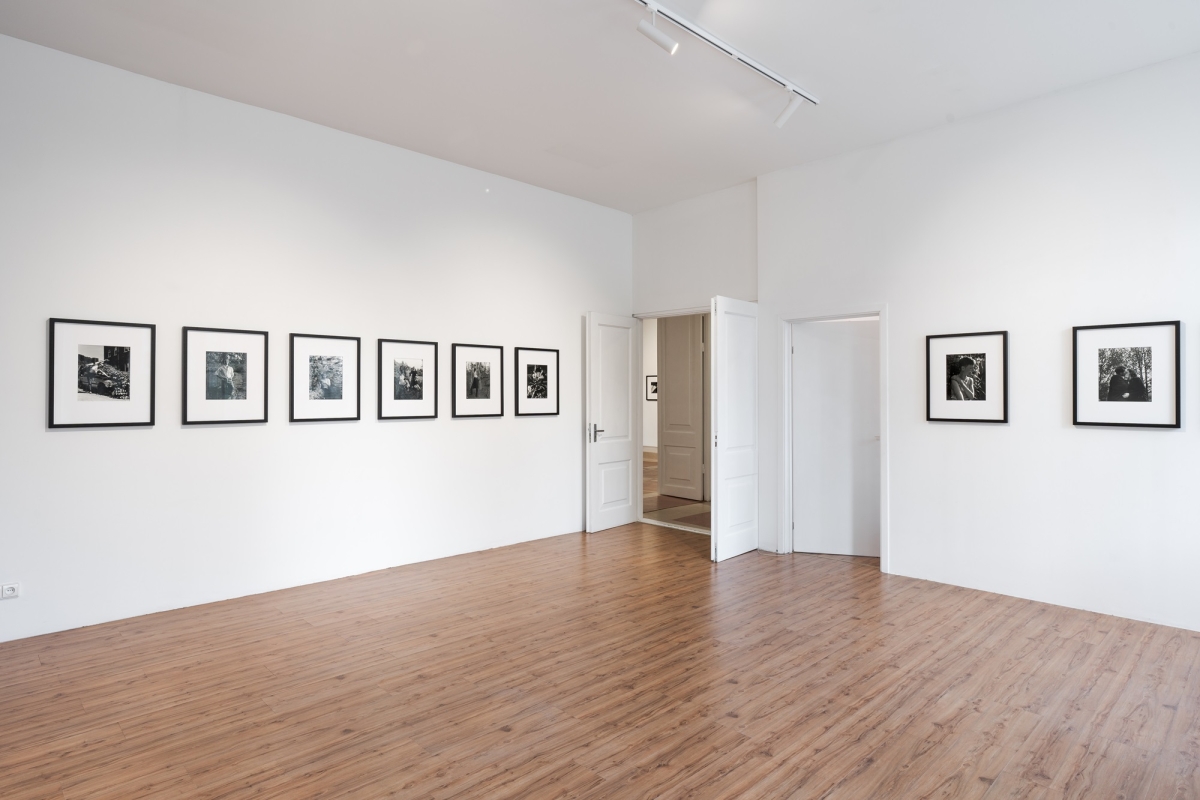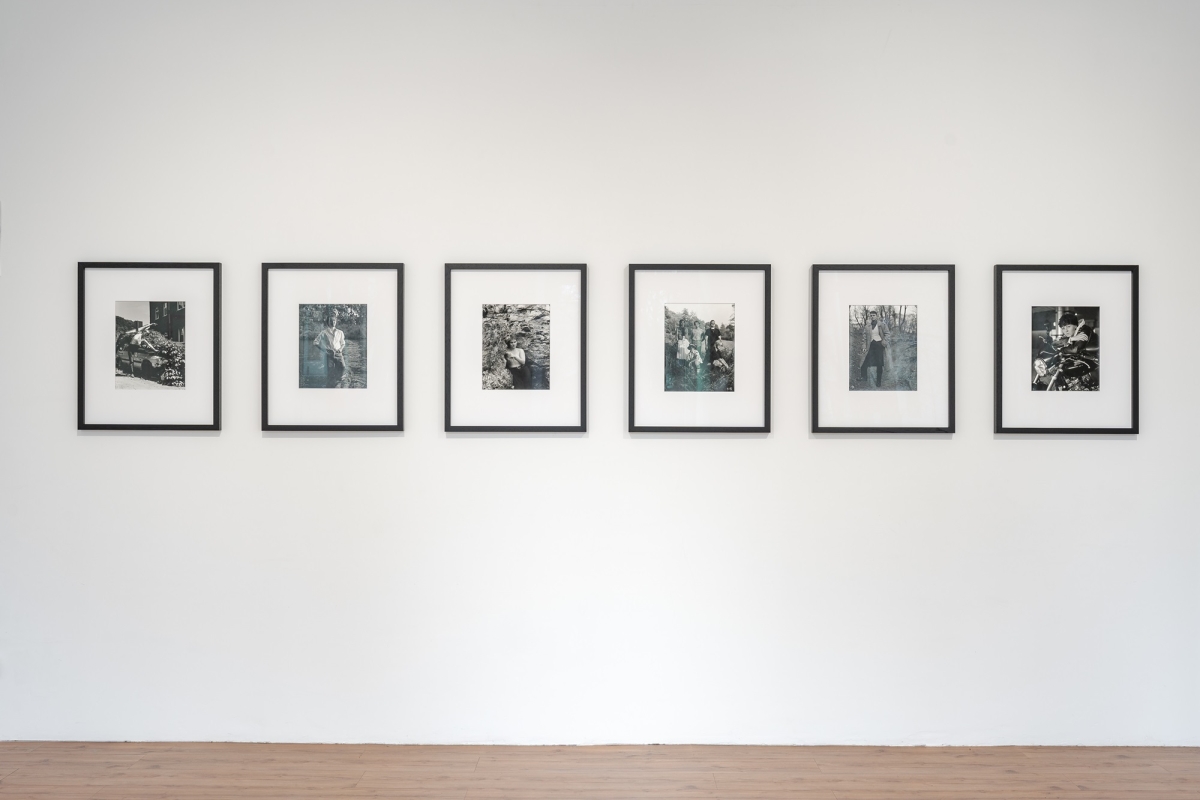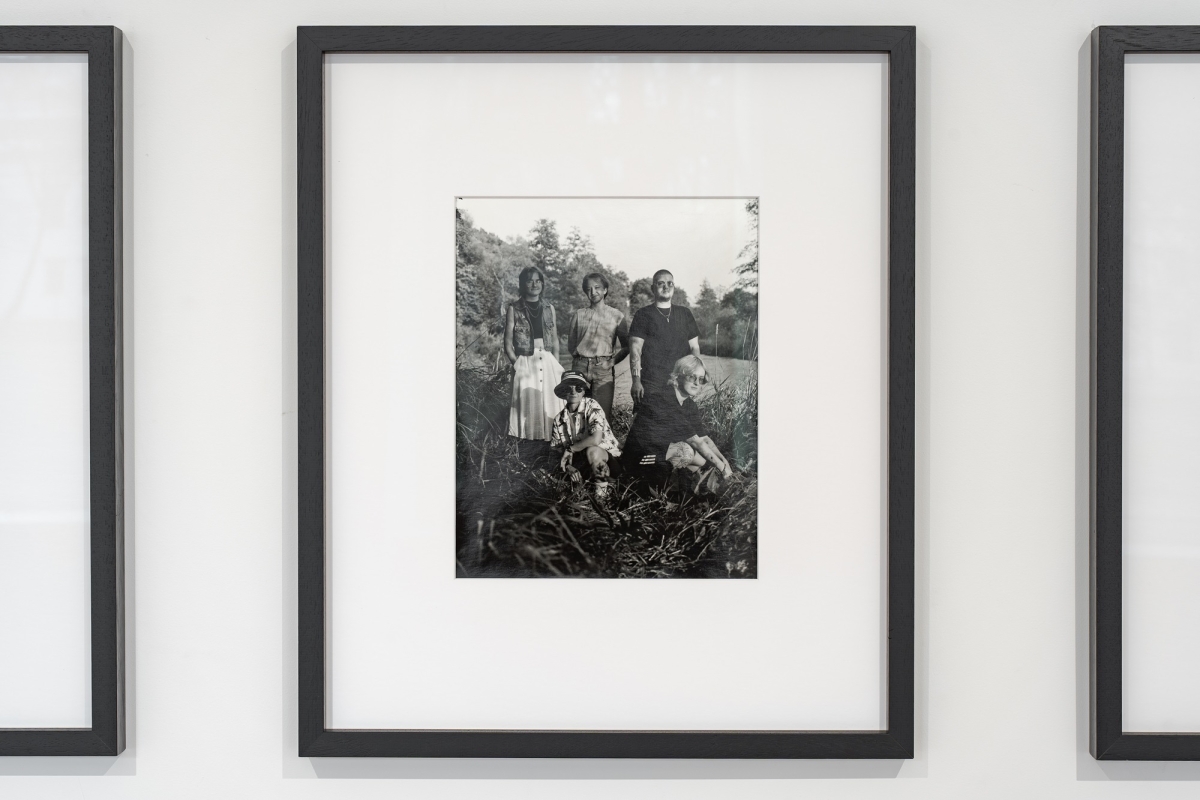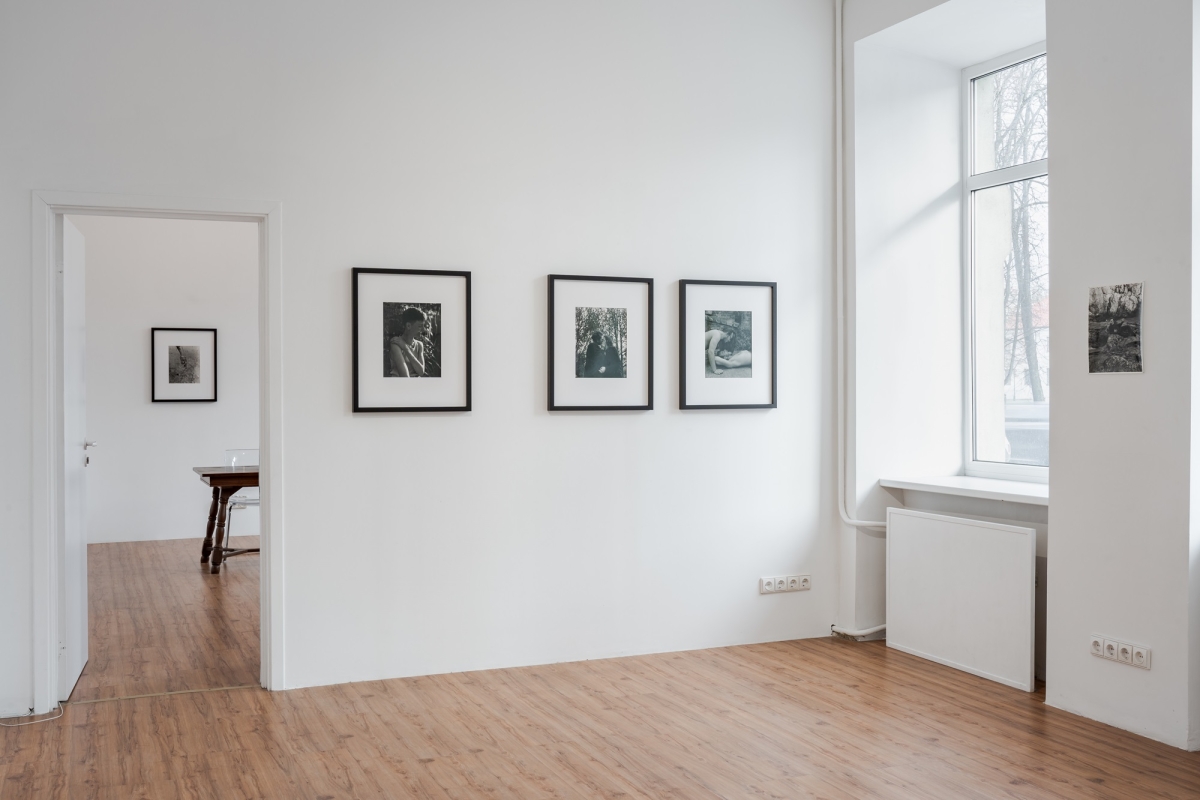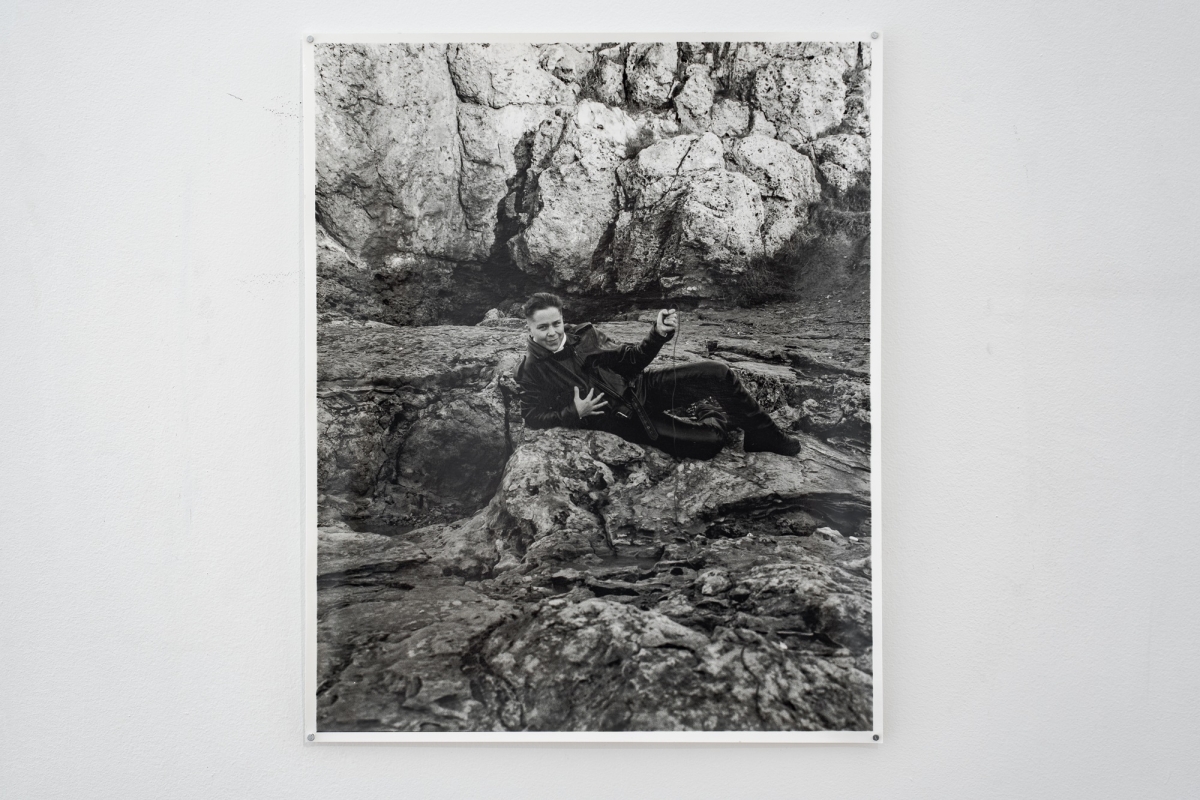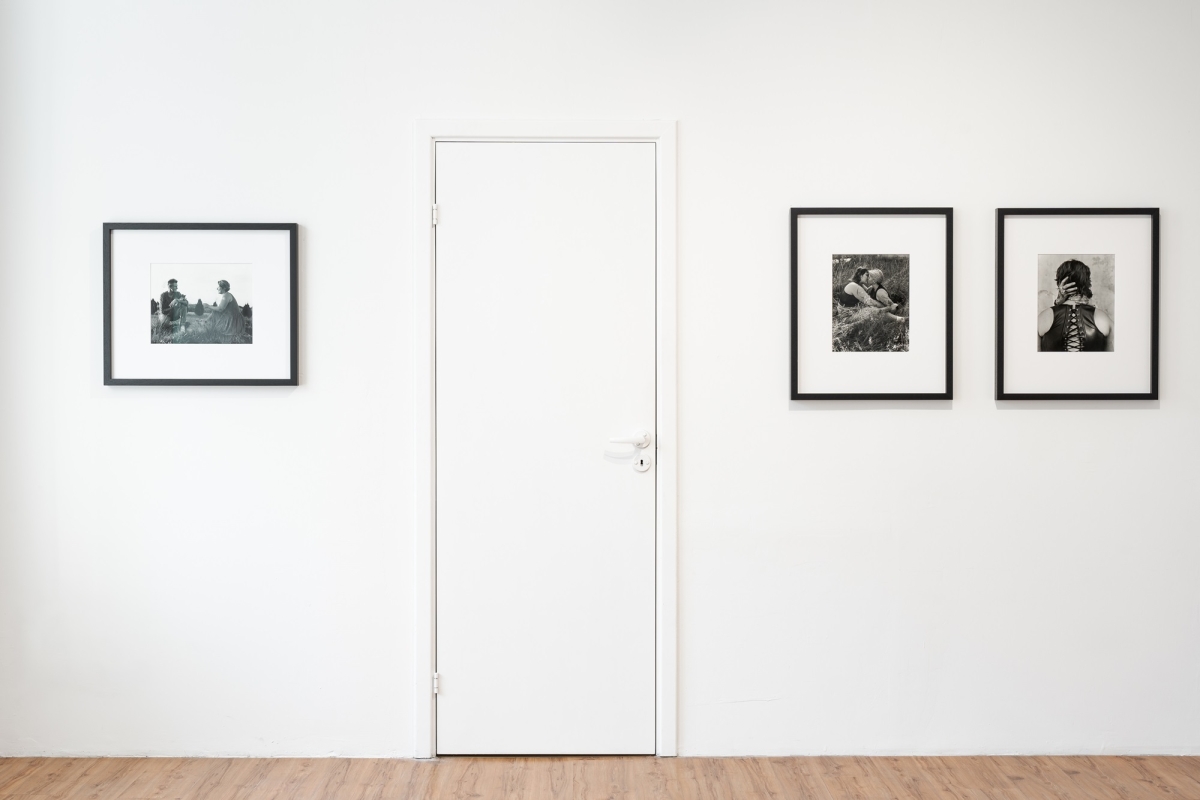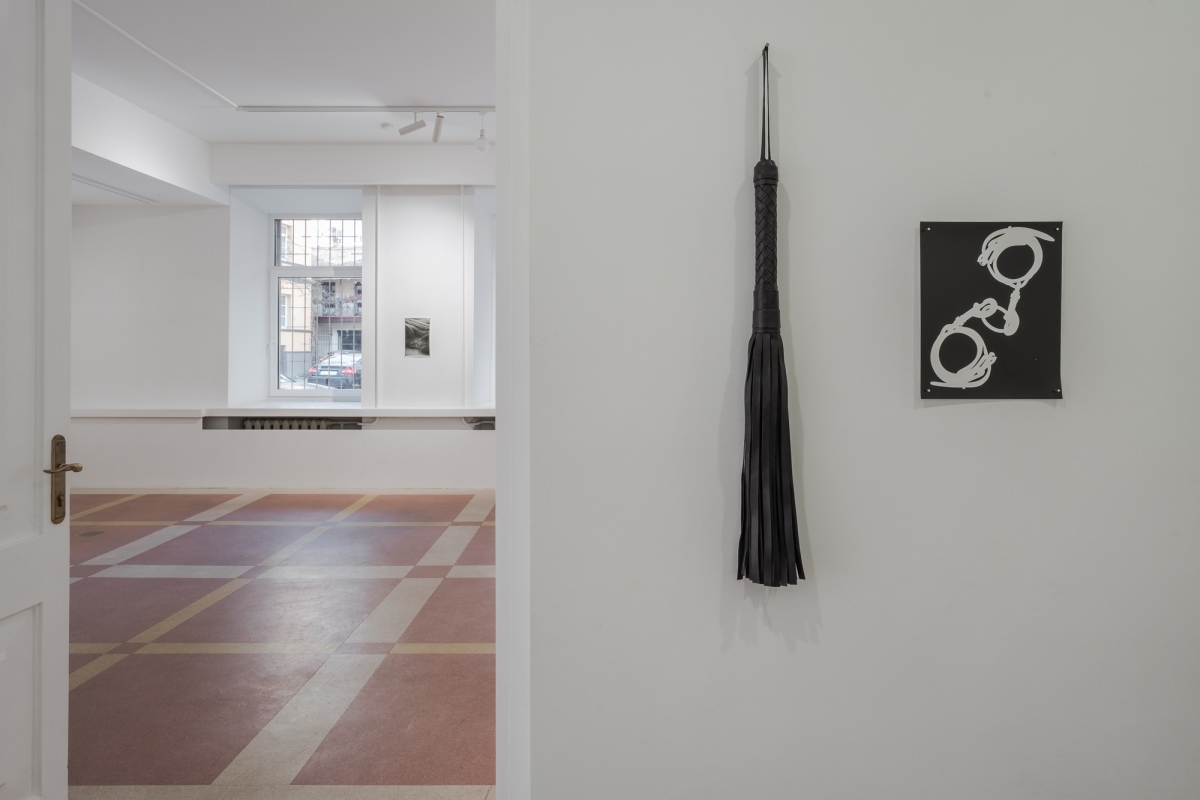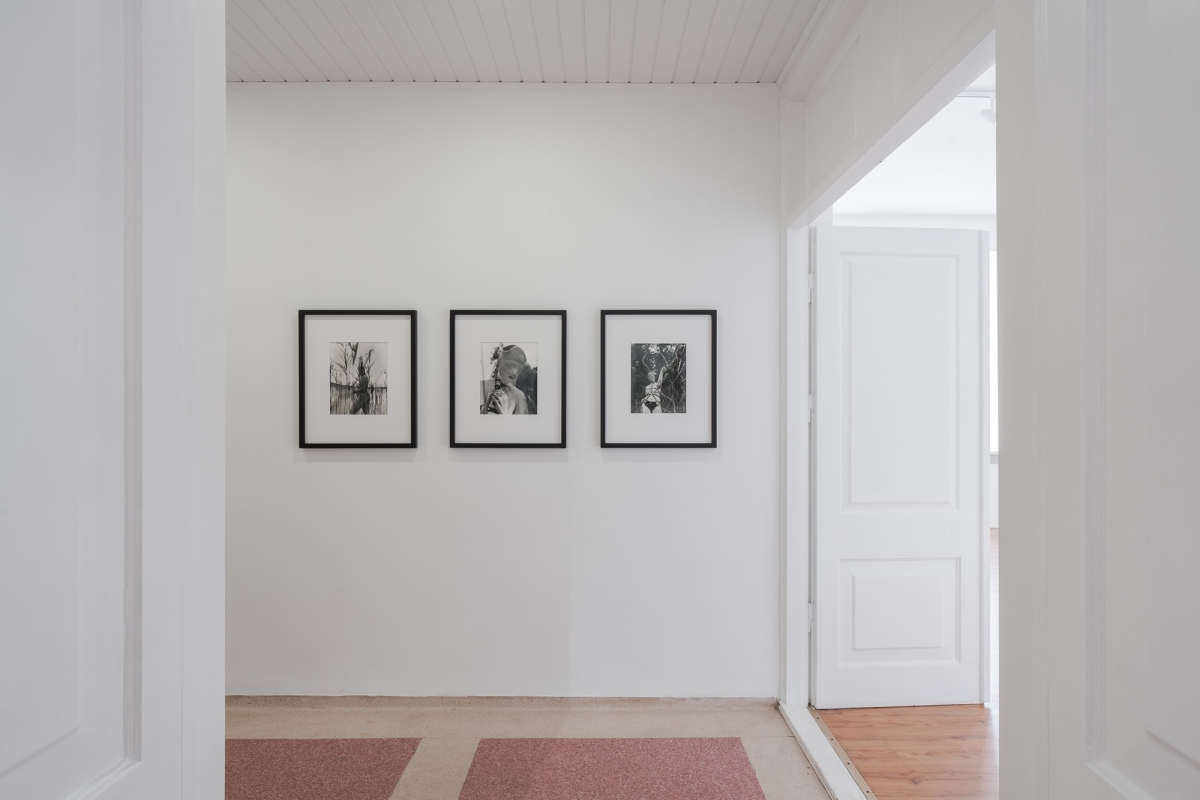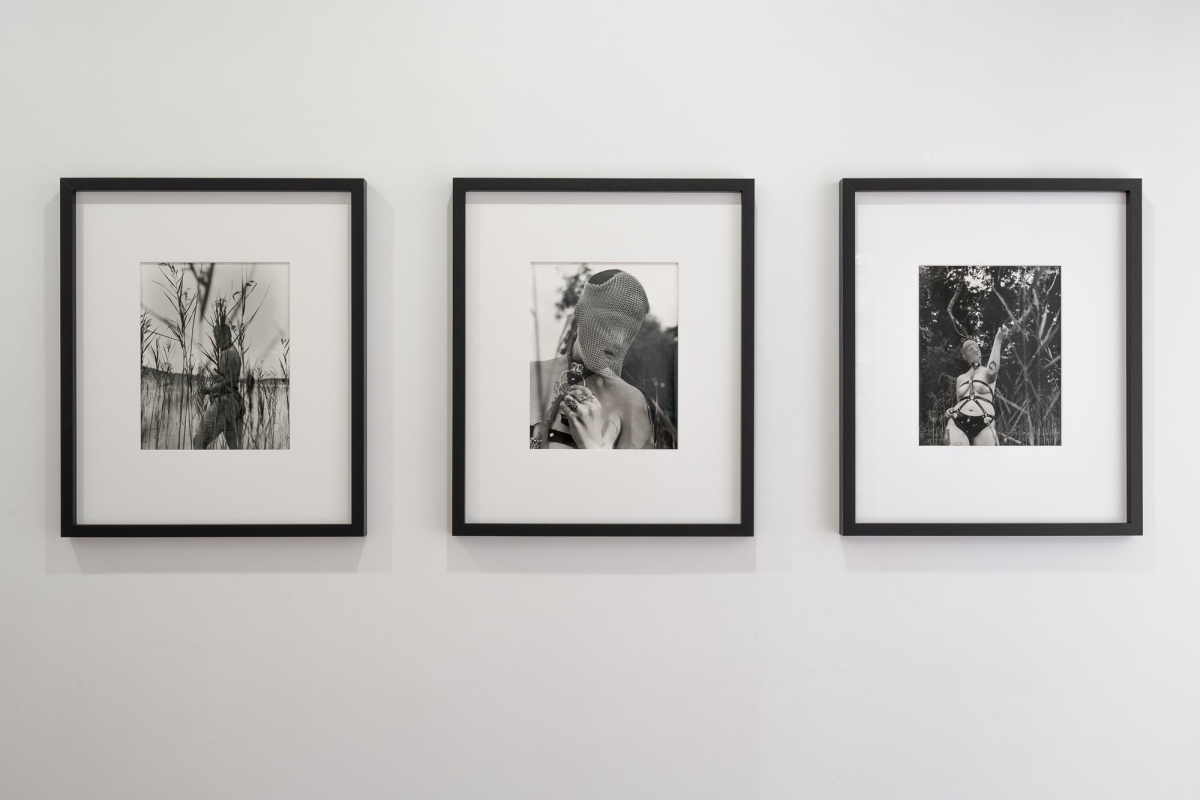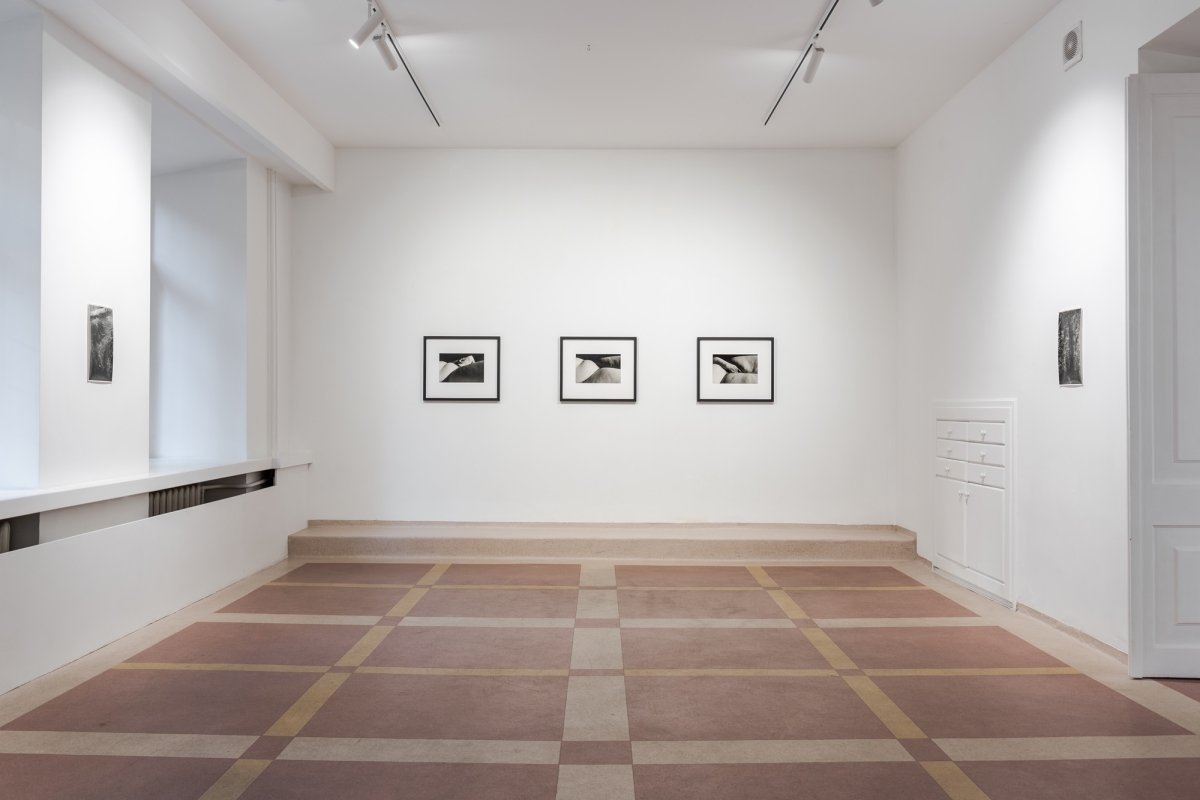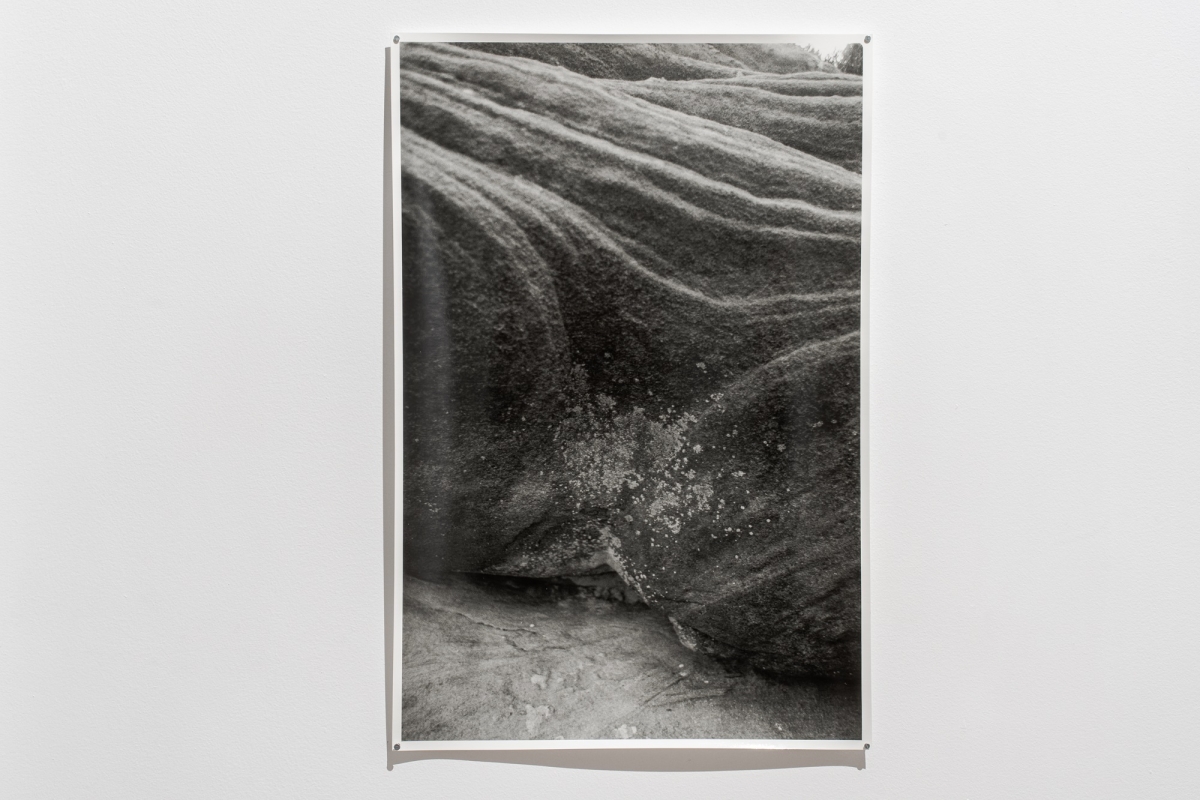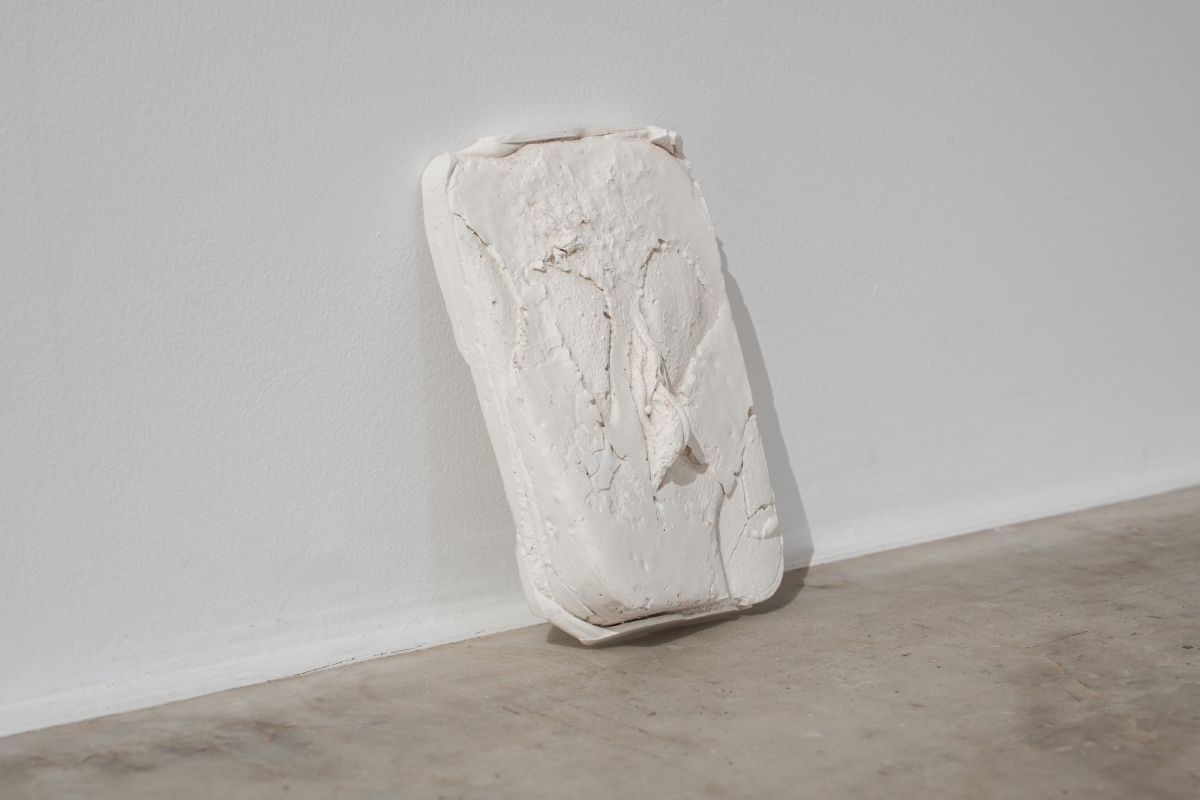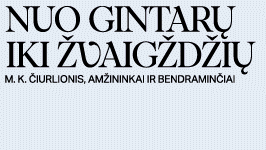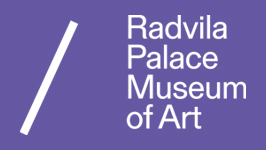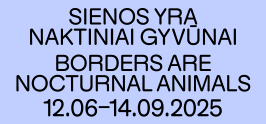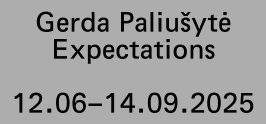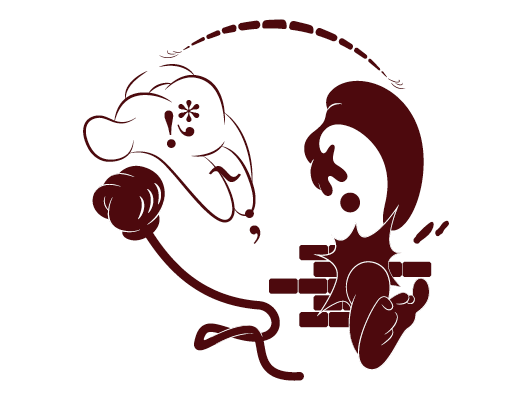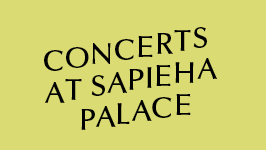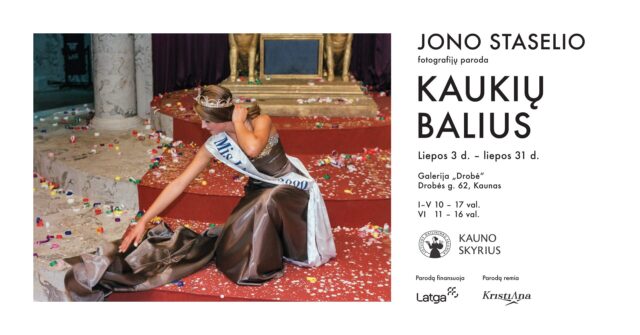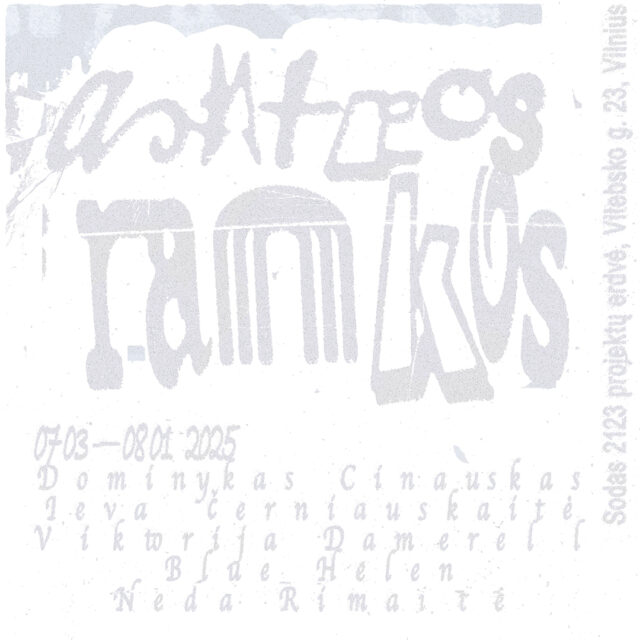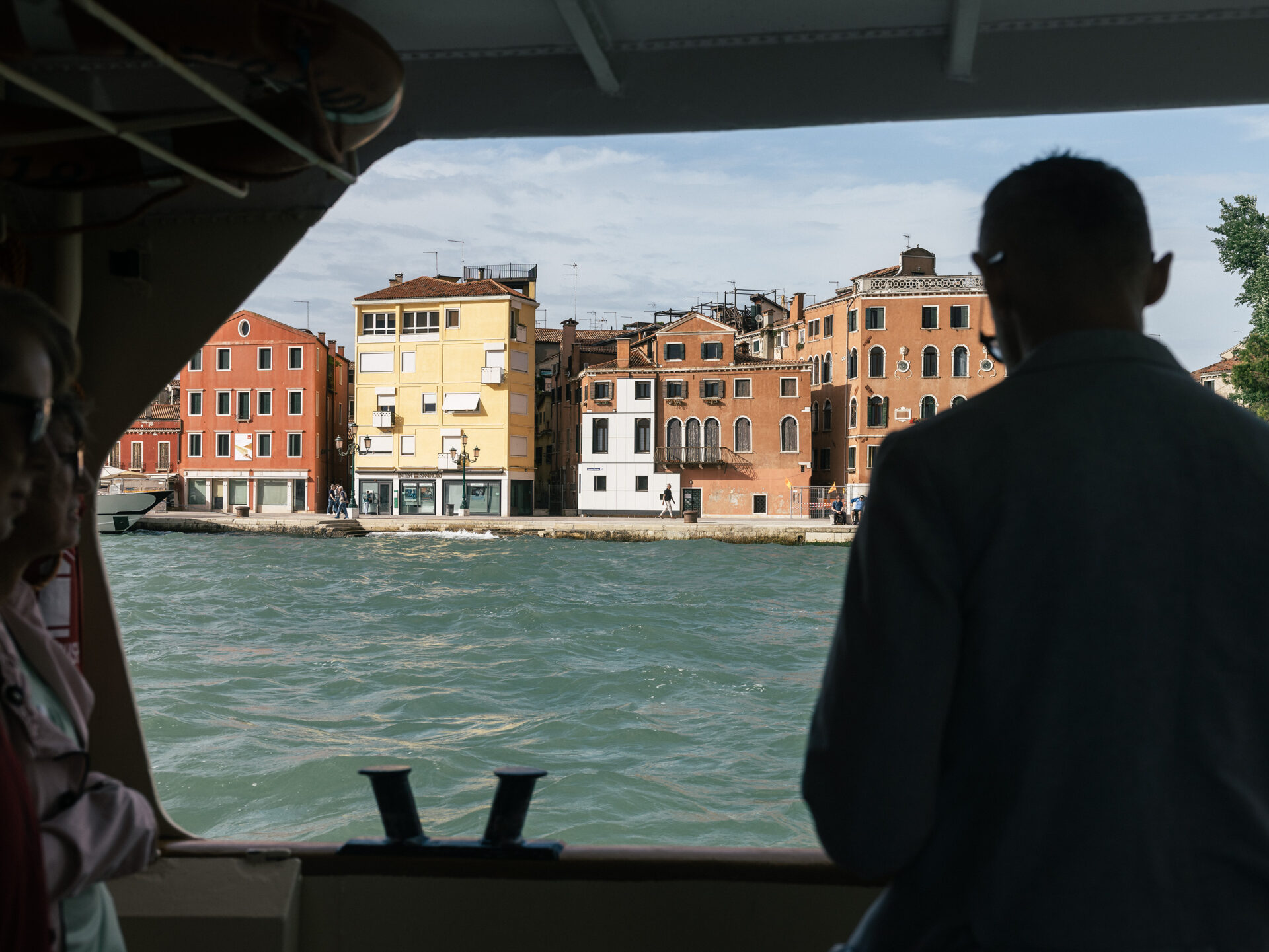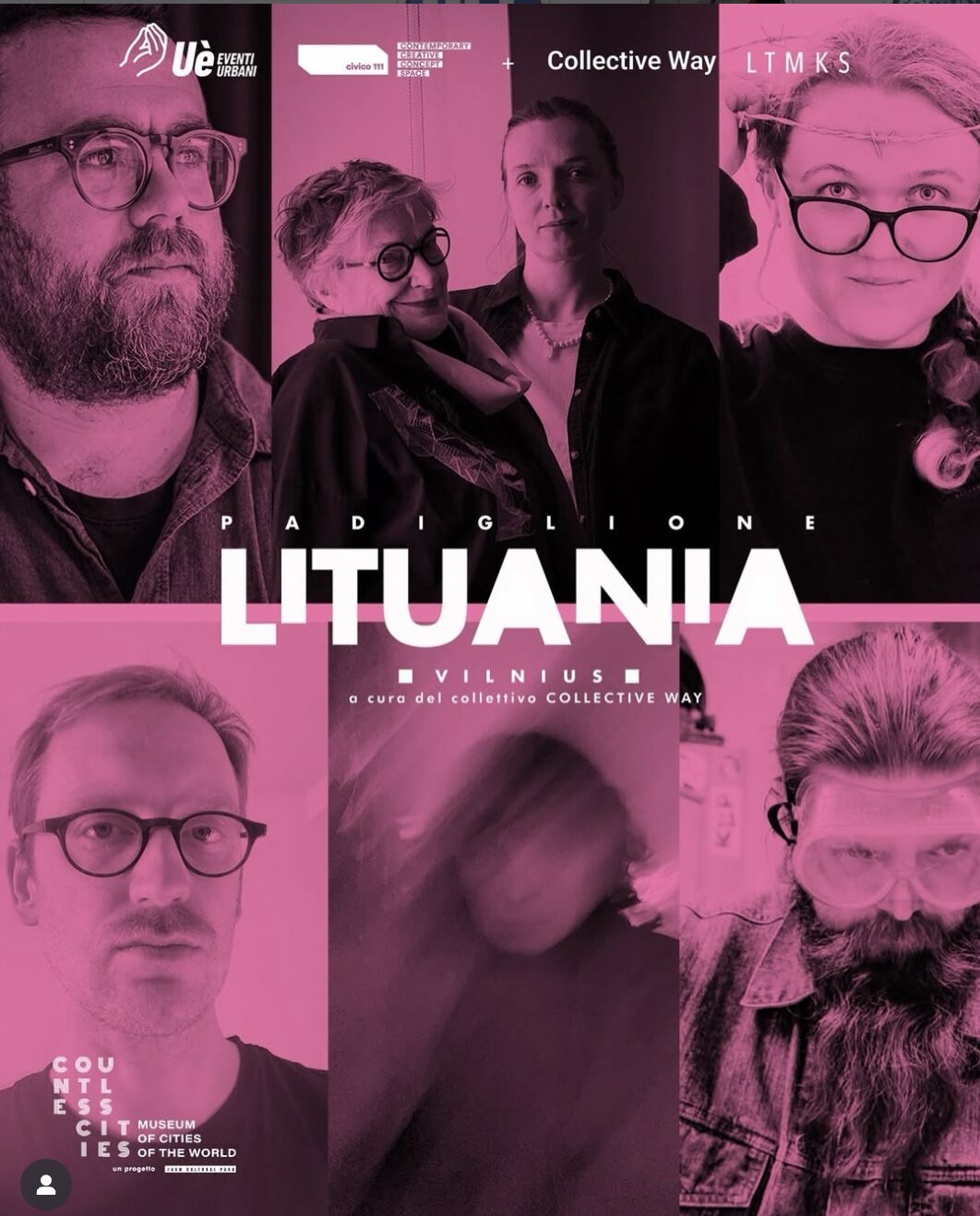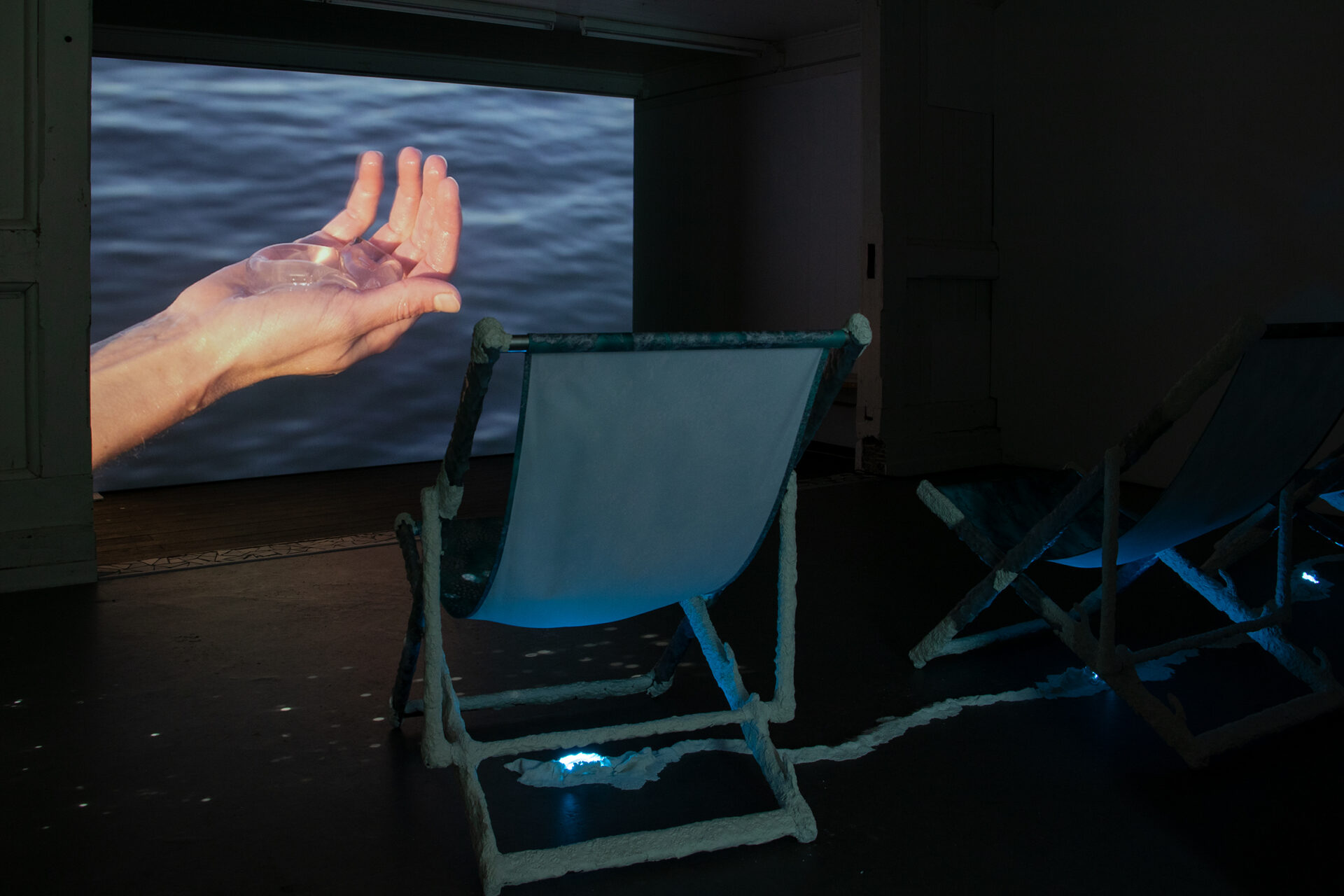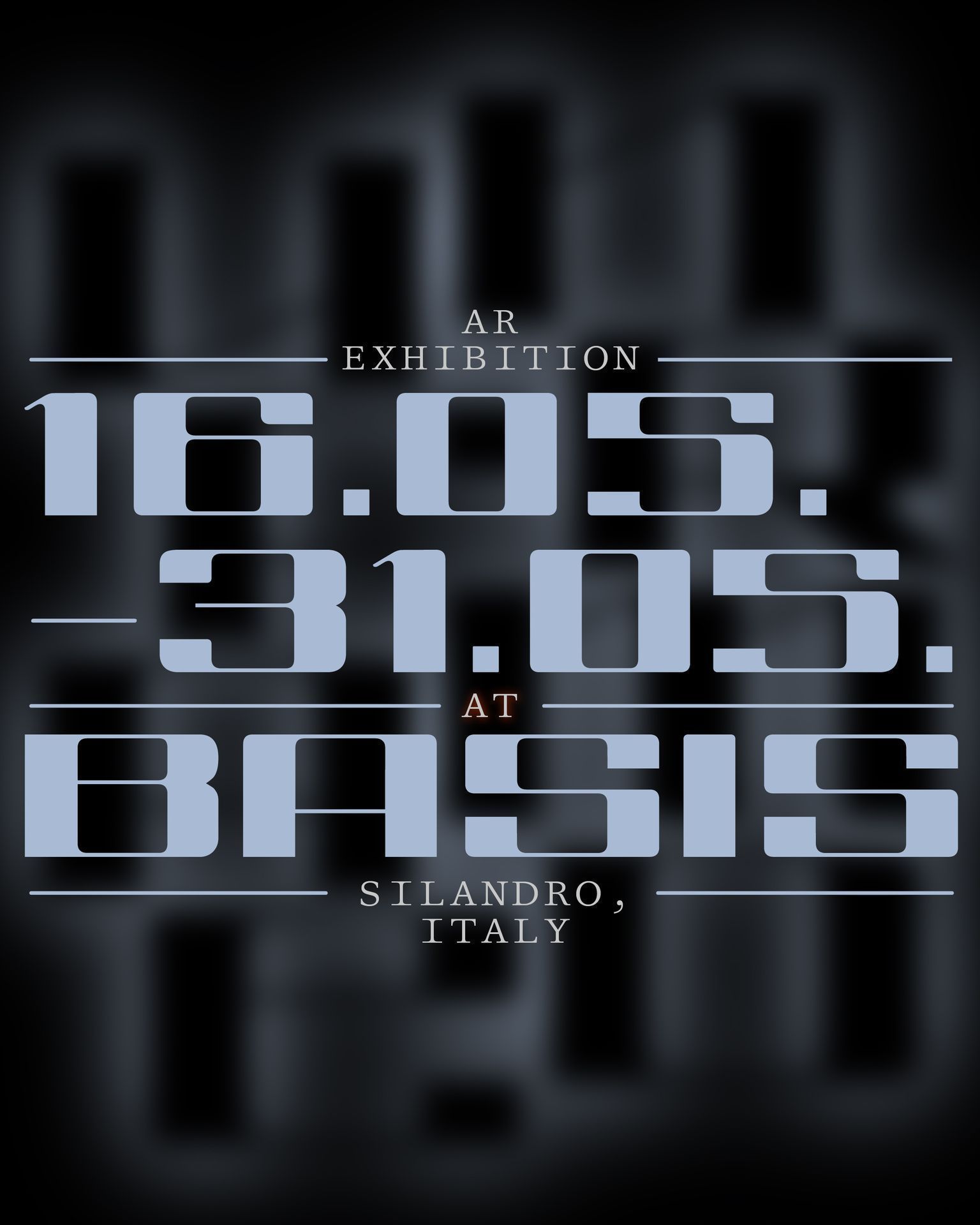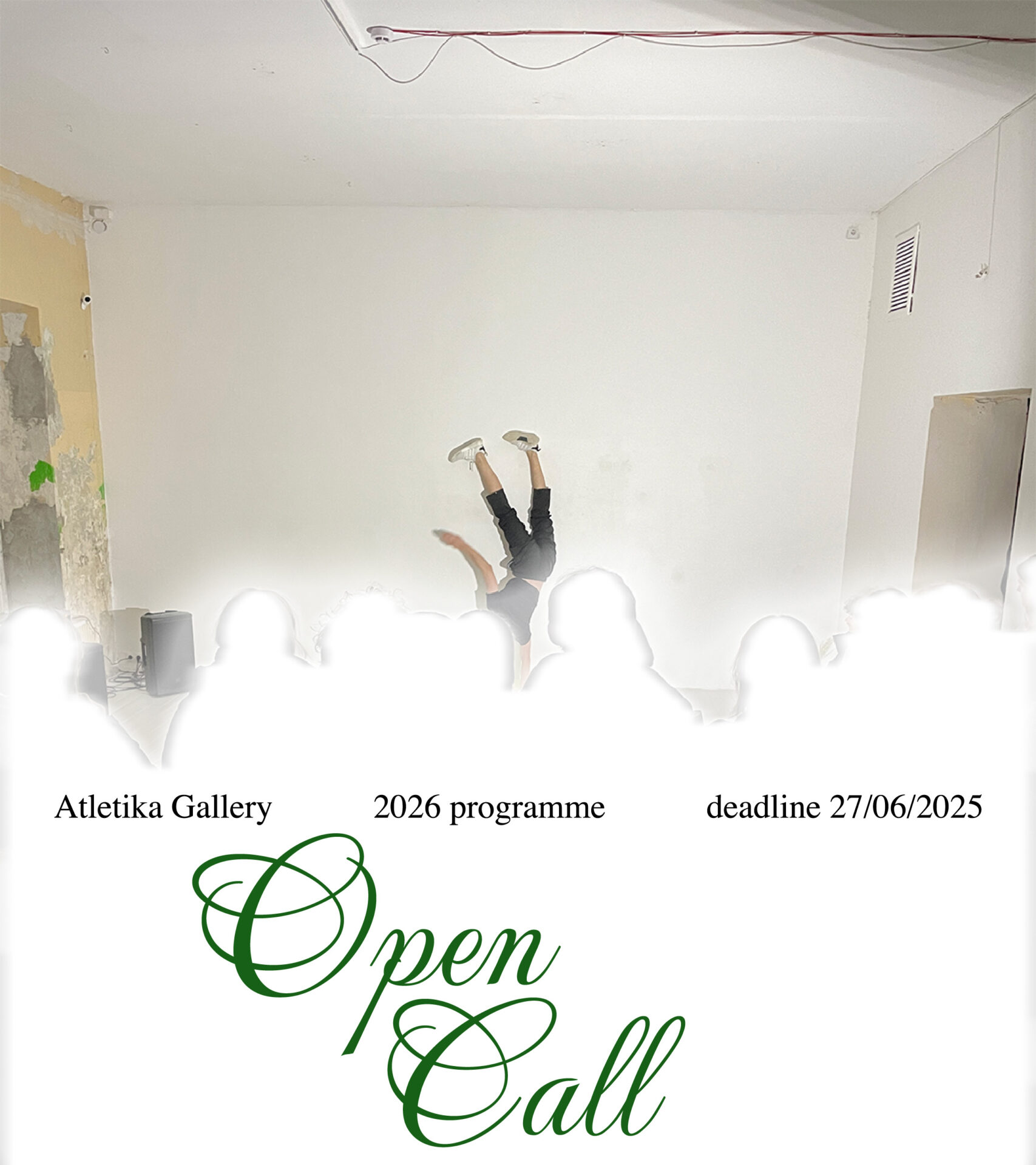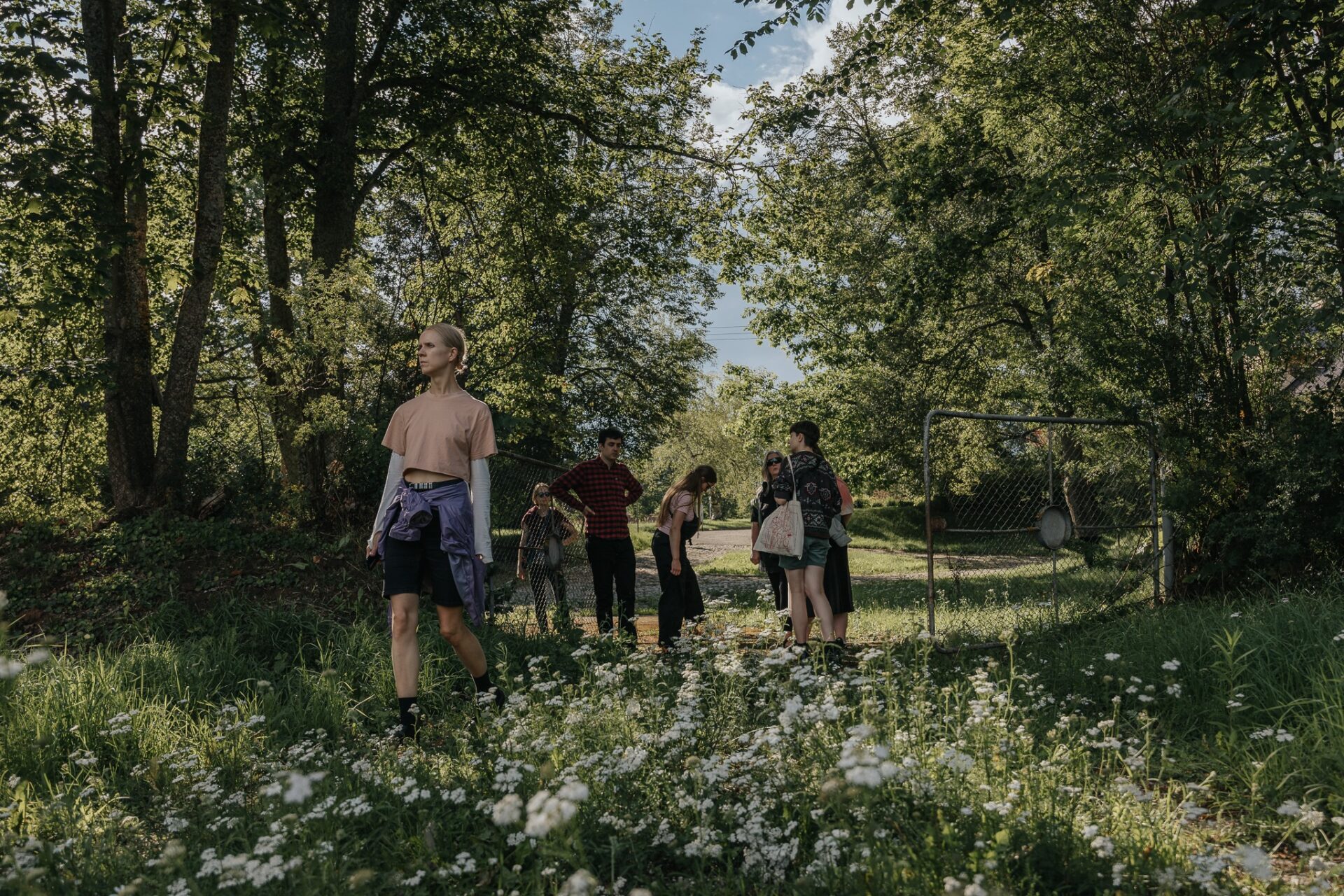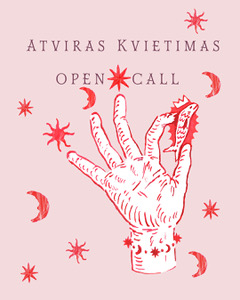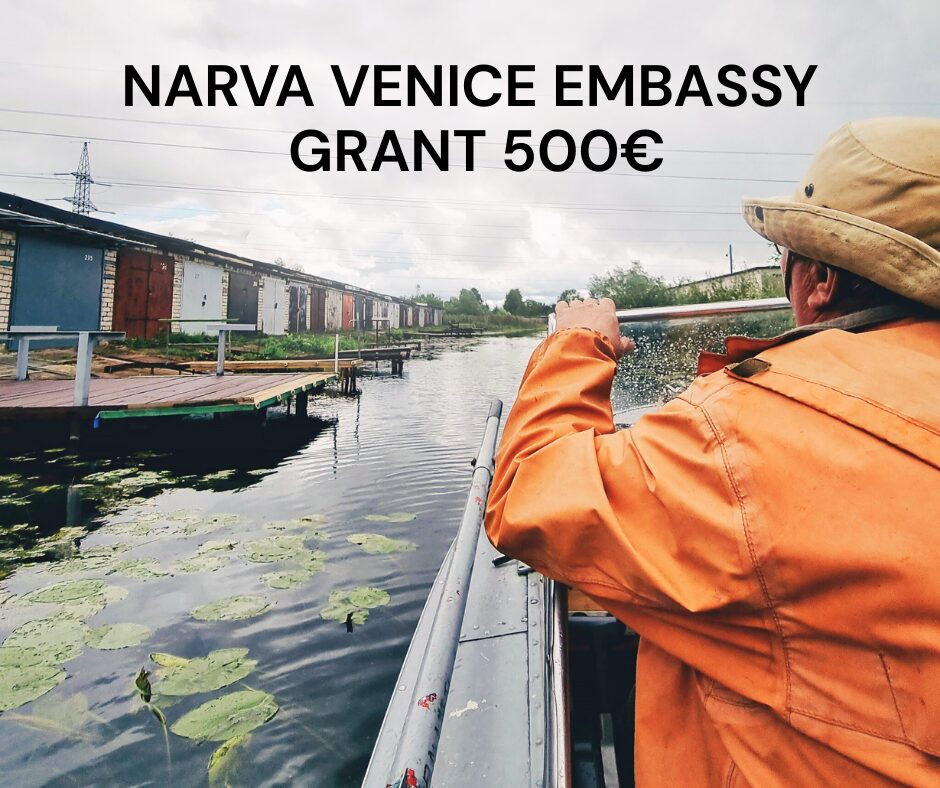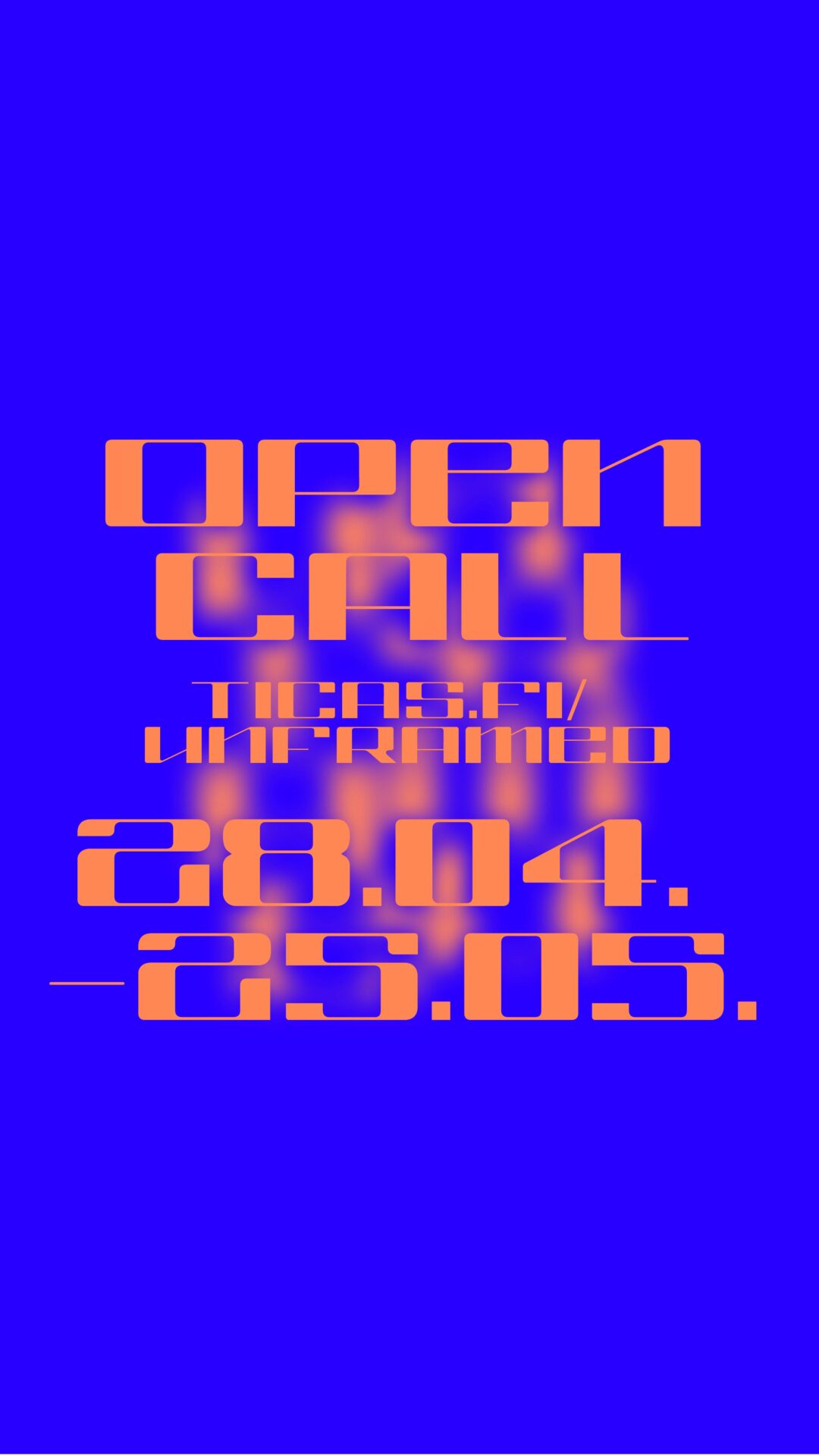Zones of Trust
This exhibition of Janina Sabaliauskaitė’s photographs is her first solo show in Lithuania. The photographer’s gaze encompasses different registers of nearness and distance, instant and monumental time: her works span from intimate portraits of queer people to landscapes of bodies, all marked by a bold dykey gaze; albeit through a lens, there is no objectification here, but on the contrary, an unfolding of subjectivity; returning the gaze to those who have long been the target of the camera’s lust for strangeness (e.g. the “freaks” of Diane Arbus). In Janina’s photographs, the glances that meet on both sides of the camera create mutual trust, support, and proximity; it is not about one decisive moment, but an intimate story of before and after. Her photography is a performative act, where time is counted differently – a long, collaborative process of finding the right space, angle, and light. Queer and dignified photography can only be created by being together for a long time and with complete mutual trust.
Trust is a relationship of mutual respect, sustaining changing identities like gravity. This relationship is highly important to the photographer: not only her camera, but also her own body becomes a mediator between the people photographed and the environment, the latter both intimate and hostile, both passionate and elemental. These almost classically serious black-and-white portraits, printed by the photographer herself, are only a small part of the ever-growing archive of the queer community. In the Lithuanian context, the beginning of queer photography can be associated with the photographs of Veronika Šleivytė, embodying her “life film”, and Virgilijus Šonta’s homoerotic gaze on the body. The monochrome aesthetic and manual work are also characteristic of Sabaliauskaitė’s practice. Her photographs of queer people are also in dialogue with the portraits of the LGBTQ+ community by Aušra Griškonytė Volungė, Samanta Matú (Arcana Femina), Laima Stasiulionytė, and Finnish artist Aurora Reinhard, all created in already independent Lithuania. Looking at a broader context, it is worth remembering Nan Goldin’s carousel of queer desires and addictions, and Catherine Opie’s portraits of lesbian couples in their homes. Sabaliauskaitė, in turn, puts an emphasis on the importance of the queer press – magazines and zines. According to the artist, she was inspired by the magazine ON OUR BACKS: Entertainment for the Adventurous Lesbian, published in the US between 1984–2006. Janina is also a co-founder of the Lithuanian LGBTQ+ magazine Kreivės.
Another important aspect of this exhibition is the representation of desire and pleasure. Fetishist and sadomasochist aesthetics, the beauty and pain of the body are all intertwined in a poetic vision that eroticises elemental nature. Lake-side reeds have never looked so mysterious as when looking through them at a masked dyke body, aware of its power. For the still “invisible” queer people of Lithuania, this is a rare and refreshing treat for the eyes. The erotic charge of nature and human can be seen as an extension of Šonta’s homoerotic gaze on the body and rocks reminiscent of the male gender, but for Janina, the morphology of the female body is more important. The way she looks at the earth and rocks is not sculptural, but rather mythological, emphasising the changed attitude of the Anthropocene era: whereas previously the earth meant resources, in Sabaliauskaitė’s photographs the Earth is a deity, a planet, soil and an element. These pictures are like an encounter of the archaeomythology of Marija Gimbutas, the Gaia Hypothesis of James Lovelock and Lynn Margulis, and the ideas of the pioneers of ecosexuality, Beth Stephens and Annie Sprinkle, who changed land art into the love of the Earth. The parallels between the Earth and the female body in Janina’s photographs also resonate with Italian-American artist Suzanne Santoro’s efforts to reintroduce the censored female gender into culture in her 1974 photo-essay Per una espressione nuova (Towards New Expression). This is particularly evident looking at the artist’s body cast displayed on the mantelpiece.
Janina’s photographs are not mere images, but a form of being, a bodily coexistence of a human and earth. They are inhabited by bodies – ones loved and left behind, ones whipped and desired. These bodies are exploded by proximity, loneliness and lust, by the power of the earth charging the landscapes of bodies. Drifts Gallery thus becomes a guest room and a bedroom, a white cube and a community house; and from the perspective of millennia, a constellation of intimate rock patterns, as the earth writes its own story – the story of a celestial body.
Laima Kreivytė
Janina Sabaliauskaitė (b. 1991, Vilnius) is a photographer and curator working with archival material and analogue photography, based in Newcastle upon Tyne, UK. In 2023, together with Ieva Kotryna Ski, she created the project Dyke Into, exhibited on JCDecaux Lithuania’s billboards in Vilnius. In 2022, the artist opened her first exhibition, Sending Love, at the Northern Gallery for Contemporary Art (Sunderland, UK), and curated a retrospective exhibition of photographer Rimaldas Vikšraitis. In 2020, together with Laura Varžgalytė, Sabaliauskaitė initiated the LGBTQ+ art and news magazine published by the Vilnius Queer Festival Kreivės. She also became co-organiser of the queer feminist festival SapfoFest as of 2017. In the same year, she co-curated (together with Jade Sweeting) an archival exhibition of the magazine On Our Backs and its editor, photographer Phyllis Christopher’s work at The NewBridge Project space in Newcastle upon Tyne, UK. In 2023, she was nominated for the North East Culture Visual Artist of the Year Award for her solo exhibition Sending Love (the awards to be announced in December 2023).
Curator: Laima Kreivytė
Exhibition Architect: Ieva Cicėnaitė
Text Editing and Translation: Alexandra Bondarev
Graphic Design: Monika Janulevičiūtė
23 November 2023 – 12 January 2024
Drifts gallery, T. Vrublevskio str. 6-2, Vilnius
The exhibition is supported by the Lithuanian Council for Culture and Vilnius City Municipality.
Photography: Andrej Vasilenko
